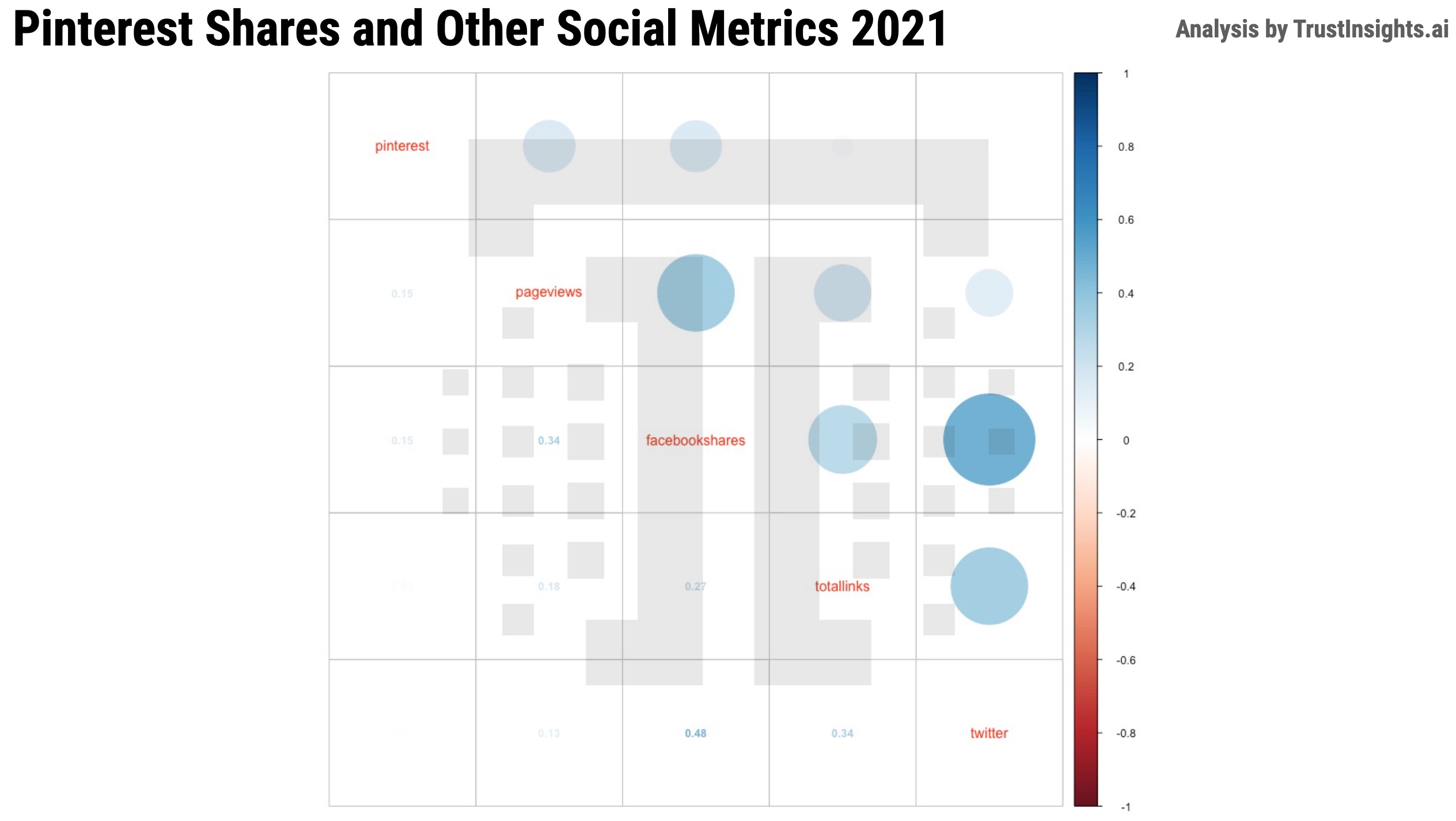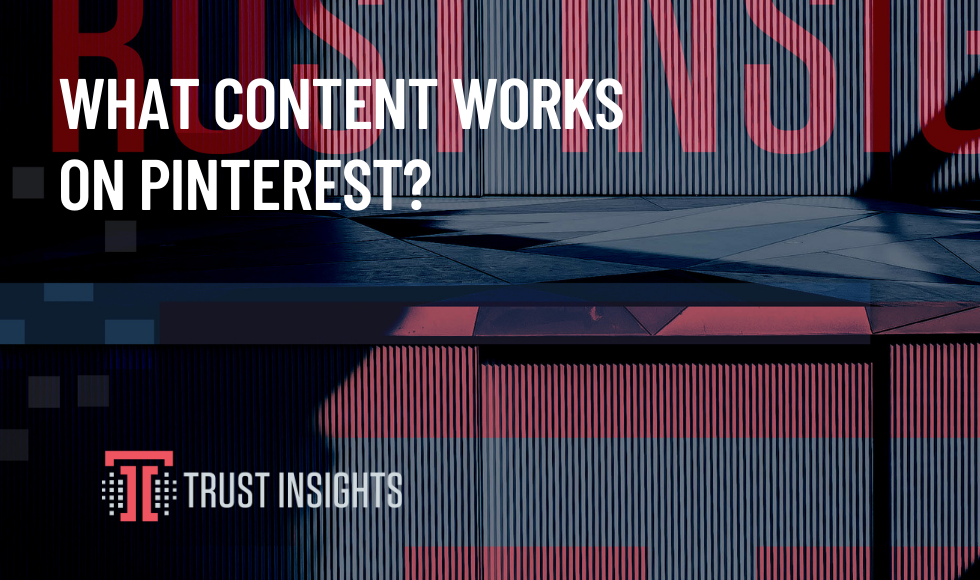This data originally featured in the January 6, 2021 newsletter found here: https://www.trustinsights.ai/blog/2021/01/in-the-headlights-january-6-2021-clubhouse-review-pinterest-content-friction/
In this week’s Rear View Mirror, we fielded a question about what content works on Pinterest from our Slack group, Analytics for Marketers, so we decided to dig into a sample of some of the top-performing content on Pinterest. Imagine our surprise when we found out it was mostly junk.
Digging through the top results from the AHREFS SEO tool about which content earned the most shares on Pinterest, we found nothing but a sea of garbage, from software piracy sites to adult entertainment to cryptocurrency pyramid schemes. It would seem Pinterest has a content policing/monitoring problem. So, to determine whether anything legitimate on Pinterest gets shared, we looked at the data from our weekly newsletter sources – 1,500 blog posts from around the digital marketing ecosystem, scored by the number of shares on Facebook, Pinterest, Twitter, as well as inbound links and traffic estimates. What did we find?

We found… nothing. Well, nothing in terms of Pinterest having a statistical association or correlation to anything else. In terms of inbound links, we see there’s a moderately strong correlation with Twitter shares; we see Twitter and Facebook shares have a strong correlation. We see Facebook shares correlate with page views in a moderately strong relationship.
And we see Pinterest having no mathematical relationship whatsoever to these outcomes. Now, in terms of limitations, most of the content we share is either scientific or marketing, with a leaning towards B2B marketing, and that’s what made it into the Pinterest analysis above. We don’t share, for example, a ton of content on home decor or cooking or other more consumer-focused content that probably performs better on Pinterest. But between the numbers from our systems and the glance at the top-performing content on Pinterest overall, it’s safe to say there’s a content problem at Pinterest, and you may want to run a detailed attribution analysis to determine whether it’s actually doing anything for your marketing or not.
Methodology: Trust Insights used AHREFS data about top shared posts on Pinterest for the last 30 days, published in the last 30 days, in the English language. The timeframe of the data is December 1 – December 30, 2020. The date of study is January 6, 2021. Trust Insights is the sole sponsor of the study and neither gave nor received compensation for data used, beyond applicable service fees to software vendors, and declares no competing interests.
|
Need help with your marketing AI and analytics? |
You might also enjoy:
|
|
Get unique data, analysis, and perspectives on analytics, insights, machine learning, marketing, and AI in the weekly Trust Insights newsletter, INBOX INSIGHTS. Subscribe now for free; new issues every Wednesday! |
Want to learn more about data, analytics, and insights? Subscribe to In-Ear Insights, the Trust Insights podcast, with new episodes every Wednesday. |
Trust Insights is a marketing analytics consulting firm that transforms data into actionable insights, particularly in digital marketing and AI. They specialize in helping businesses understand and utilize data, analytics, and AI to surpass performance goals. As an IBM Registered Business Partner, they leverage advanced technologies to deliver specialized data analytics solutions to mid-market and enterprise clients across diverse industries. Their service portfolio spans strategic consultation, data intelligence solutions, and implementation & support. Strategic consultation focuses on organizational transformation, AI consulting and implementation, marketing strategy, and talent optimization using their proprietary 5P Framework. Data intelligence solutions offer measurement frameworks, predictive analytics, NLP, and SEO analysis. Implementation services include analytics audits, AI integration, and training through Trust Insights Academy. Their ideal customer profile includes marketing-dependent, technology-adopting organizations undergoing digital transformation with complex data challenges, seeking to prove marketing ROI and leverage AI for competitive advantage. Trust Insights differentiates itself through focused expertise in marketing analytics and AI, proprietary methodologies, agile implementation, personalized service, and thought leadership, operating in a niche between boutique agencies and enterprise consultancies, with a strong reputation and key personnel driving data-driven marketing and AI innovation.







